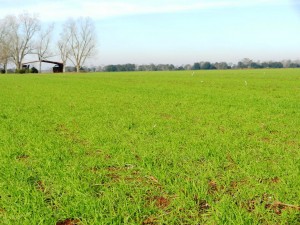We are approaching the time when several key management decisions need to be made for wheat production. Many of these decisions are made based on the growth stage of the crop. At least five scales are used worldwide to describe the growth stages of wheat and other small grains. Probably the most widely used in the U.S. is the Feekes scale. Florida research has shown that one timely nitrogen top-dress application near Feekes growth stage 3, when tillers are forming, is adequate for optimum yields. This usually occurs during the last week of January or the first 10 days of February. However, small grains can still show response to nitrogen (N) topdressed through stage 5 before the first visible stem node. Generally, top yields can be made with a total of 90-120 lbs./A of N applied between the planting and top-dress applications.
Postemergence herbicide applications should be made when weeds are small unless specifically stated on label recommendations. 2,4-D is the most widely used herbicide in wheat and other small grains. Small grains vary in their tolerance to 2,4-D depending on the crop growth stage. Generally, wheat varieties are the most tolerant, followed by rye and barley, with oats being the least tolerant. As a general rule, the least injury to the grain crop with 2,4-D can be expected when it is applied from the 3-4 tiller to full tiller stage. Applications made after jointing will result in grain head injury and possible reduction in seed fill.
Visit the reference sites below for more information on wheat growth stages, fertilization, herbicide selection, and general production.
- Management Considerations for Wheat Production in Florida
- Weed Management in Small Grains Harvested for Grain
- Alabama Winter Wheat Production Guide
- UGA 2012-2013 Wheat Production Guide
- Physiological Feekes Growth Stages in Winter Wheat
- Growth Stages of Wheat
 0
0

